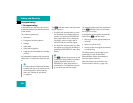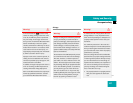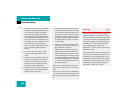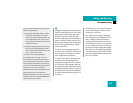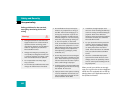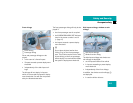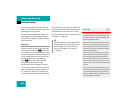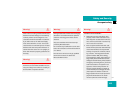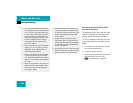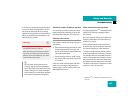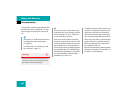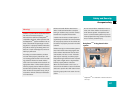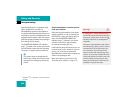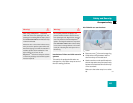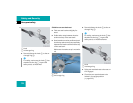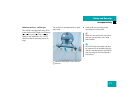
64
Safety and Security
Occupant safety
Emergency tensioning device (ETD),
seat belt force limiter
The seat belts for the front and rear outer
seats are equipped with emergency ten-
sioning devices and belt force limiters.
The ETD is designed to activate in the fol-
lowing cases when the seat belts are fas-
tened:
ț in frontal or rear-end impacts exceed-
ing a preset severity level
ț in certain vehicle rollovers
ț if the restraint systems are operational
and functioning correctly, see
1 indicator lamp (
୴ page 56)
ț Never wear the shoulder belt under your
arm, against your neck or off your shoul-
der. In a crash, your body would move
too far forward. That would increase the
chance of head and neck injuries. The
belt would also apply too much force to
the ribs or abdomen, which could se-
verely injure internal organs such as
your liver or spleen.
ț Never wear belts over rigid or breakable
objects in or on your clothing, such as
eyeglasses, pens, SmartKeys etc., as
these might cause injuries.
ț Position the lap belt as low as possible
on your hips and not across the abdo-
men. If the belt is positioned across your
abdomen, it could cause serious injuries
in a crash.
ț Never use a seat belt for more than one
person at a time. Do not fasten a seat
belt around a person and another per-
son or other objects.
ț Belts should not be worn twisted. In a
crash, you wouldn’t have the full width
of the belt to manage impact forces. The
twisted belt against your body could
cause injuries.
ț Pregnant women should also use a
lap-shoulder belt. The lap belt portion
should be positioned as low as possible
on the hips to avoid any possible pres-
sure on the abdomen.
ț Never place your feet on the instrument
panel or on the seat. Always keep both
feet on the floor in front of the seat.
୴୴



